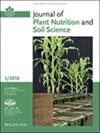Modulation Response of Biologically Synthesized ZnO Nanoparticles Using Mentha piperita L. on the Physio-Chemical Parameters of Pisum sativum L.
Abstract
Background
In agriculture, biosynthesized ZnO nanoparticles (NPs) have gained considerable attention due to their cost-effectiveness and eco-friendliness. Natural, plant-based, or biological entities act as reducing and stabilizing agents that can be used to synthesize ZnO NPs.
Aim
This study aimed to assess the impact of green-synthesized ZnO NPs derived from Mentha piperita L. on the growth, physiological, and biochemical parameters of Pisum sativum L.
Methods
Energy-dispersive x-ray (EDX), Fourier-transform infrared spectroscopy (FTIR), scanning electron microscopy (SEM), ultraviolet–visible spectroscopy, and x-ray diffraction (XRD) were used for the characterization of ZnO NPs to confirm their structure, size, and stability. Various concentrations of ZnO NPs (0, 0.1, 0.5, and 1 mg L−1) were applied to seeds of P. sativum for the subsequent evaluation of germination rates, growth parameters, photosynthetic pigments, carbohydrates, and protein contents.
Results
The results indicated that ZnO NPs significantly enhanced seed germination by up to 31% and positively influenced other growth parameters, including a 44% increase in shoot length, a 41.4% increase in root length, an 18.57% increase in shoot weight, and a 35.71% increase in root weight compared to the control. The treated plants exhibited increased chlorophyll content (42% in chlorophyll a and 34% in chlorophyll b), as well as elevated carbohydrate (36.67%) and protein (23.75%) levels, suggesting a positive impact on the plants’ metabolic activities.
Conclusions
Green-synthesized ZnO NPs significantly promoted pea seed germination, root and shoot growth, and improved key physiological and biochemical parameters, such as chlorophyll content, total soluble sugars, and protein levels.

 求助内容:
求助内容: 应助结果提醒方式:
应助结果提醒方式:


